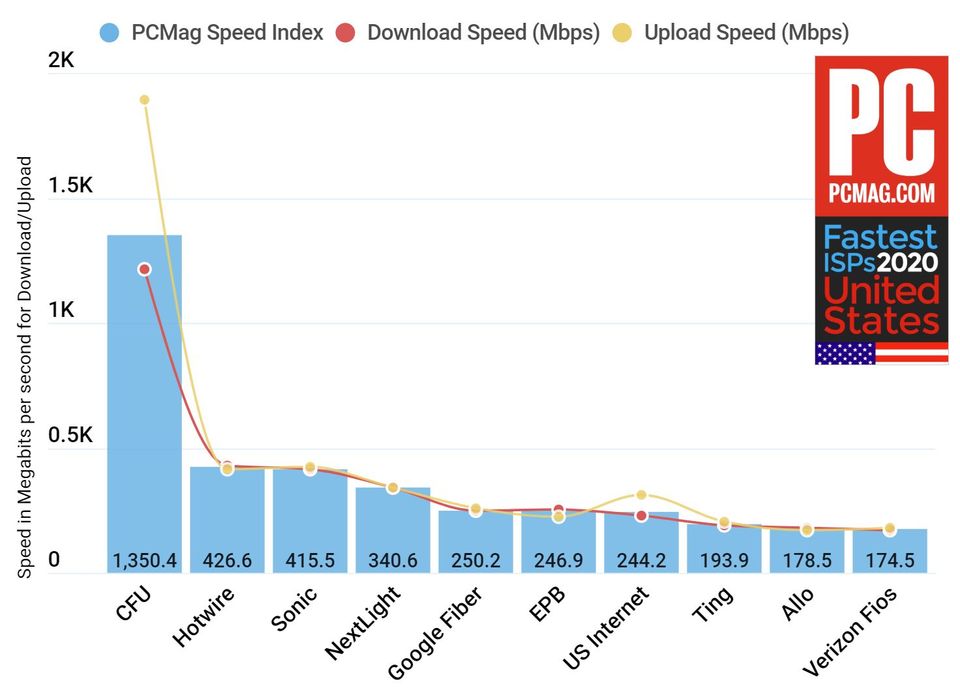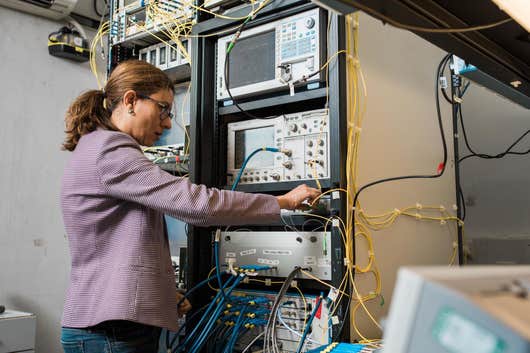Municipal internet in Chattanooga Tennessee
Just about every day I experience a moment of significant Internet related frustration. The primary impact is that I avoid video conferencing or producing video, cause my upload speeds are not stable or fast enough. Although avoiding doesn’t mean I don’t do it, but rather I try not to. Which is pointless, since I need to do it more, yet take a look at this salon I did with Mark Jeftovic and Charles Smith, and note how often my video drops out, and how lagged my audio is.
While my frustration for this situation could be focused in a range of directions (in addition to the default which is towards myself), the primary target are elected officials. The more research I do into community based connectivity the clearer it is to me that politicians and in particular municipalities are either part of the solution or part of the problem.
In today’s issue of Future Fibre, let’s take a look at one of the most celebrated and successful stories, EPB, or the Electric Power Board of Chattanooga Tennessee, providers of what may be the world’s fastest residential Internet service, at a blazing 10 Gbit/s.
Launched in 2009, EPB’s internet service was a by-product of the utility’s desire to upgrade their electricity infrastructure. Rather than rely upon external providers, the utility recognized that it already had the infrastructure and internal skills to run (fibre optic) cables. In creating their own fibre optic network, they were not only able to create a smart grid for better electricity operations management, but also create Internet infrastructure for the city and its residents.
The advantage of creating a fibre optic network from scratch is that they did not have to manage or maintain a legacy network, and could offer initial speeds of 1 Gbit/s which has since been increased to 10 Gbit/s.
To provide some context, 10 Gbit/s is equivalent to 10,000 Mbit/s. I currently get around 10 Mbit/s download and 1Mbit/s upload. That’s a 1,000 to 10,000 times difference!?
Here’s a relevant excerpt from a local news article reflecting on the first decade of this network and anticipating what the second decade will hold:
The fiber optic network quickly exceeded those expectations, drawing more than 105,000 paying subscribers for its service and boosting speeds more than 200 times faster than the standard broadband connection with 10 Gig service across its 600-square-mile area. But more than just being a successful business venture offering faster video and gaming downloads, the $226.8 million investment EPB launched in 2009 on fiber optic technology has helped to transform EPB and the city it serves.
By boasting the fastest citywide internet service in the Western Hemisphere with Gig service in 2010 and 10 Gig service by 2015, EPB secured Chattanooga's claim as "the Gig City" and has helped anchor the Innovation District, with many businesses developed or drawn to Chattanooga by the fast internet links. High-speed connections from EPB helped attract and grow such online startups as the moving service Bellhops, the code builder and development platform builder Skuid, the online counseling service WeCounsel and the global ship security startup International Maritime Security Associates to Chattanooga.
"The fiber optic infrastructure in Chattanooga has already brought tremendous value to the community," says University of Tennessee at Chattanooga Economist Bento Lobo, who estimates EPB's fiber optic network generated $1.3 billion of community benefits in its first five years. "I expect that we are likely to benefit even more in the future as the need for greater bandwidth and cyber security increases," Lobo says.
Not only should we regard the Internet as essential infrastructure, which this pandemic is made undeniable, but we should also recognize the economic engine that it offers. It’s not just essential infrastructure, but is also essential to the economy.
Which is why it is worth noting the history of the EPB and the TVA, or Tennessee Valley Authority. The TVA was created in 1933 largely in response to the Great Depression, as a means of helping to support and develop the Tennessee Valley region. The biggest role of the TVA became power generation, and this had a tremendous impact on the economic and urban development of the region. It’s a great example of public investment and infrastructure fostering jobs and industry.
I first learned of the TVA while in Huntsville Alabama, one of the pillars of the US space industry. Huntsville has a space industry because of an aluminum industry which was based there due to cheap electricity provided by the TVA. When I went to Huntsville, I flew into Nashville (cause why not) and drove south. I returned via Chattanooga, which was not too out of the way, and somewhere I had wanted to (quickly) visit.
Chattanooga is a relatively small city, and the EPB in addition to providing electricity to the area, also provided telephone services since it’s founding in 1935. That history of telecommunications service fostered a culture that enabled the utility to build their fibre optic network.
I find it interesting both to recognize this history, but also note how ready and willing residents are to write their own history. In particular the use of the phrase “gig city” named after their gigabit Internet. It’s a bold move to not only invest and embrace this infrastructure, but then use it as the basis of a municipal branding or story.
Chattanooga, TN did this years ago. Went city-wide with their installation of super fast fiber internet. It’s been a game changer for them, and worth learning from any city – especially now: https://t.co/akMj7Ef6HX
— steve carter (@stvcrtr) April 20, 2020
The "Chattanooga Choo Choo" sign over the old terminal station is purely decorative, a throwback. Since the Southern Railroad left town in the early 1970s, the southeastern Tennessee city has been looking for an identity that has nothing to do with a bygone big band song or an abandoned train. It's finally found one in another huge infrastructure project: The Gig.
The first thing you see at the Chattanooga airport is a giant sign that says "Welcome to Gig City." There are advertisements and flyers and billboards for the Gig in the city's public parks. The city's largest building is dedicated to the Gig. Years before Google Fiber, Chattanooga was the first city in the United States to have a citywide gigabit-per-second fiber internet network. And the city's government built it itself.
At a time when small cities, towns, and rural areas are seeing an exodus of young people to large cities and a precipitous decline in solidly middle class jobs, the Gig has helped Chattanooga thrive and create a new identity for itself.
What I love about this branding is that it not only sums up the Internet situation in Chattanooga, but it evokes the quality of life that is possible in smaller communities, if and when solid Internet infrastructure is available.
The economic opportunities are significant, and the collaborative effect offers tremendous potential. Rather than regard the Internet as optional, or a product to be sold, when we treat it as infrastructure, it is far more likely to lead to the economic development that smaller communities crave and require.
Chattanooga's Gig: how one city's super-fast internet is driving a tech boom http://t.co/2J8NzOX2fU
— Charles Finley (@charlesfinley) August 31, 2014
“We’re not Silicon Valley. No one will ever replicate that,” says Allan Davis, one of Lamp Post’s partners. “But we don’t need to be and not everyone wants that. The expense, the hassle. You don’t need to be there to create great technology. You can do it here.”
He’s not alone in thinking so. Lamp Post is one of several tech incubators in this mid-sized Tennessee city. Money is flowing in. Chattanooga has gone from close to zero venture capital in 2009 to more than five organized funds with investable capital over $50m in 2014 – not bad for a city of 171,000 people.
The city’s go-getting mayor Andy Berke, a Democrat tipped for higher office, is currently reviewing plans for a city center tech zone specifically designed to meet the needs of its new workforce.
In large part the success is being driven by The Gig. Thanks to an ambitious roll-out by the city’s municipally owned electricity company, EPB, Chattanooga is one of the only places on Earth with internet at speeds as fast as 1 gigabit per second – about 50 times faster than the US average.
Of course it is worth noting that the Internet is not a magic wand. It does not automatically create wealth and opportunities. However it does open doors, and provide a path for people to do so.
The next step is to create social infrastructure and education to help people walk the walk and start their own journey. The following podcast episode delves a little into some of the social challenges Chattanooga faces.
Can Chattanooga, Tennessee, bridge its digital divide? https://t.co/MISR6FxkzP (via @SlatePlacemaker) pic.twitter.com/qBqOhCbVFZ
— Slate (@Slate) September 8, 2016
While addressing this divide is no easy task, having the municipally owned infrastructure makes it easier, given the ability to connect schools, community centres, and provide relatively affordable connectivity.
Research has also been conducted that attempts to quantify the positive impact of investing in this kind of public owned fibre infrastructure.
EPB fiber optics gives Chattanooga a boost @chattanoogaID http://t.co/ZfQlH3ROJY via @timesfreepress
— Bruce Katz (@bruce_katz) September 16, 2015
An EPB-commissioned study by UTC's Department of Finance estimates EPB's smart grid and fiber optic network has helped add at least 2,800 jobs and pumped an extra $865.3 million into the local economy over the past four years by cutting power outages, improving data connections, lowering power bills and attracting businesses to the self-described "Gig City."
"This analysis suggests that the true economic value of the fiber infrastructure is much greater than the cost of installing and maintaining the infrastructure," said Benton Lobo, a professor of finance at UTC who authored the 69-page report.
The study found businesses identify high-speed Internet service and the smart grid as one of the top five reasons for locating here. Existing businesses and consumers also are able to operate more efficiently with faster Internet service and fewer electricity interruptions due to the upgraded EPB fiber optic network.
EPB's smart grid is estimated to have avoided 124.7 million customer minutes of interruptions by better detection of power faults and better methods of rerouting power to restore service more quickly than in the past. Faster Internet service also has saved consumers time and helped attract such data and tech businesses as HomeServe, Claris Networks and many of the startups at the CoLab and Lamp Post Group in downtown Chattanooga.
Here’s a link to the full study, produced by the University of Tennessee at Chattanooga.
These are exactly the kinds of stories we’re looking to find and profile as part of our Future Fibre series. They provide evidence and hope as to why municipally funded Internet infrastructure is essential for our (economic) future.
“Future Fibre” is a recurring series in the Metaviews newsletter where we share some of the research, other models, news, and ideas around community based connectivity.
The series is sponsored by our friends at EasyDNS:

I’ve been an EasyDNS customer for almost 20 years (and I know a number of you are as well based on my recommendation). Mark Jeftovic the co-founder and CEO is a long time friend and Metaviews subscriber. EasyDNS is one of the best service providers on the Internet, and Mark ensures his customers have the benefits of the latest and most secure technology.
Mark also writes a smart newsletter called #AxisofEasy and has just published a fascinating book called “Unassailable”, which we recently reviewed. I’m thrilled that Mark shares my belief in the potential for micro-ISPs and is sponsoring this series as a result.
Metaviews is also now a partner in the AxisofEasy.com website that aggregates and amplifies content from us, Mark, and Charles Hugh Smith.
This issue’s bonus video features commercials used by commercial ISPs to fight against EPB’s plans to build and deploy their municipal fibre network:



